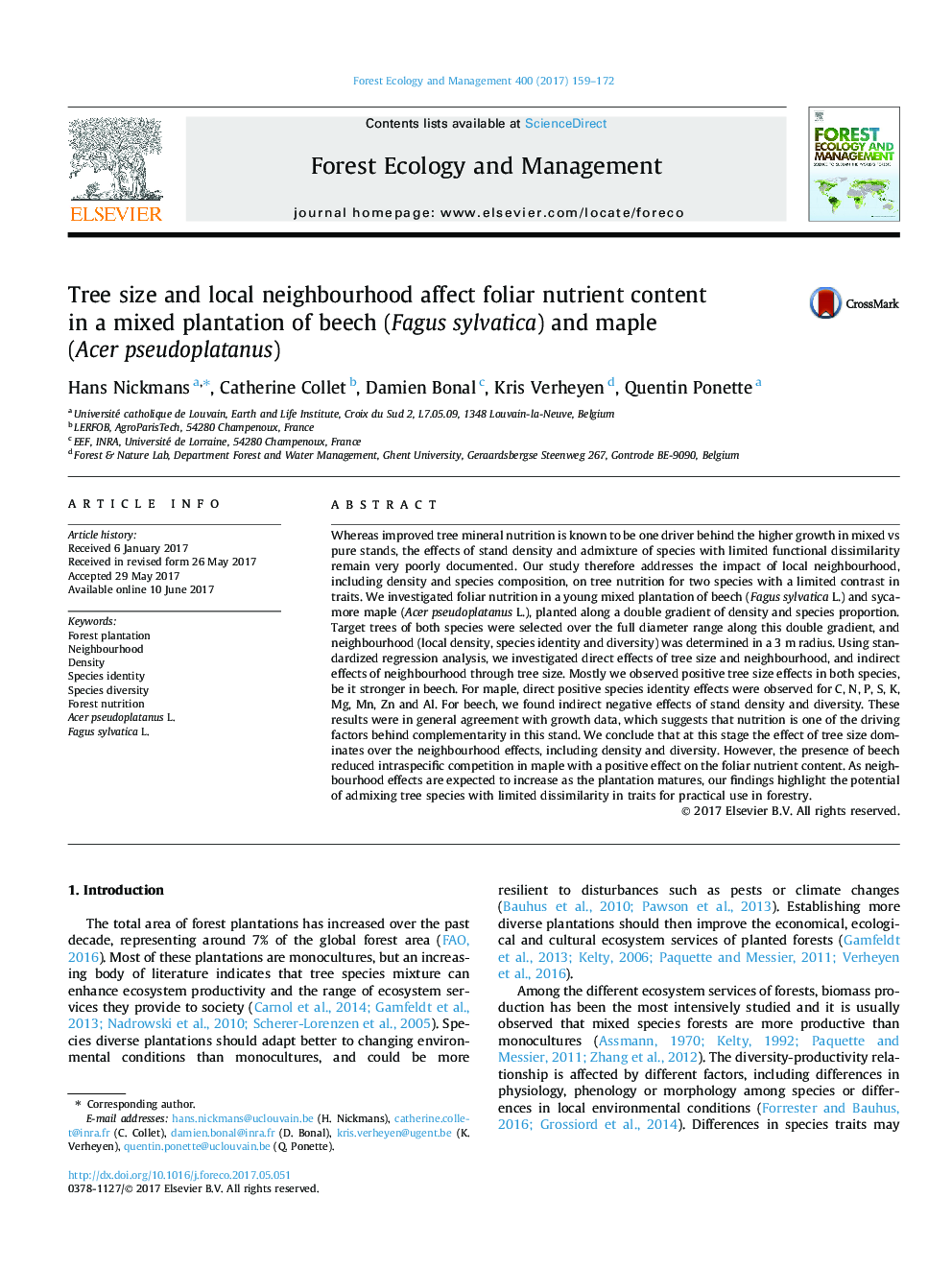| کد مقاله | کد نشریه | سال انتشار | مقاله انگلیسی | نسخه تمام متن |
|---|---|---|---|---|
| 6459221 | 1421358 | 2017 | 14 صفحه PDF | دانلود رایگان |

- Use of a double clinal design to disentangle mixture, density and tree size effects.
- Use of path analysis to distinguish between direct and indirect effects.
- Comparison with previous research on productivity in the same plantation.
- Tree size effect dominates over neighbourhood effects.
- Beech reduces intraspecific competition in maple, with positive effect on nutrition.
Whereas improved tree mineral nutrition is known to be one driver behind the higher growth in mixed vs pure stands, the effects of stand density and admixture of species with limited functional dissimilarity remain very poorly documented. Our study therefore addresses the impact of local neighbourhood, including density and species composition, on tree nutrition for two species with a limited contrast in traits. We investigated foliar nutrition in a young mixed plantation of beech (Fagus sylvatica L.) and sycamore maple (Acer pseudoplatanus L.), planted along a double gradient of density and species proportion. Target trees of both species were selected over the full diameter range along this double gradient, and neighbourhood (local density, species identity and diversity) was determined in a 3Â m radius. Using standardized regression analysis, we investigated direct effects of tree size and neighbourhood, and indirect effects of neighbourhood through tree size. Mostly we observed positive tree size effects in both species, be it stronger in beech. For maple, direct positive species identity effects were observed for C, N, P, S, K, Mg, Mn, Zn and Al. For beech, we found indirect negative effects of stand density and diversity. These results were in general agreement with growth data, which suggests that nutrition is one of the driving factors behind complementarity in this stand. We conclude that at this stage the effect of tree size dominates over the neighbourhood effects, including density and diversity. However, the presence of beech reduced intraspecific competition in maple with a positive effect on the foliar nutrient content. As neighbourhood effects are expected to increase as the plantation matures, our findings highlight the potential of admixing tree species with limited dissimilarity in traits for practical use in forestry.
Journal: Forest Ecology and Management - Volume 400, 15 September 2017, Pages 159-172